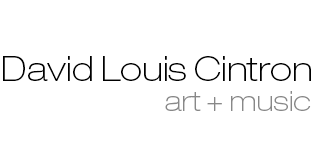Tangents Exhibition CAN Journal Review
The Abstract Question, At AAWR: Part I, Tangents
Author: Christopher Richards
Dual exhibitions at the Artists Archives of the Western Reserve explore North East Ohio’s long running interest in geometric abstraction. The first, Tangents, asks the question: “Why is making abstract work still important?” Jenniffer Omaitz’s curatorial debut boasts a serious panel of artists working in abstraction, primarily of the geometric variety, each with unique and individual voices. (A second exhibition, A Hard Line, draws from AAWR’s permanent collection, and mostly an earlier generation of artists.) An examination of Tangents reveals overlapping and divergent themes that connect the works from one of these contemporary artists to another, including theory and subject explorations, as well as technique and stylistic approaches. In doing so, that question finds many answers.
By gathering works of David Louis Cintron, Gianna Commito, Mark Howard, Mark Keffer, Natalie Lanese, Catherine Lentini, Ed Raffel, Andrew Reach and Susan Squires, Omaitz illustrates the many ways abstraction can be used to explore the human condition. Whether exploring our visual perception of the world around us, or taking a more psychological and spiritual perspective, each artist enhances Omaitz’ message that abstract art, “…combines ways of thinking and making that interact with the temporal…”
David Louis Cintron’s more painterly and expressionistic piece, Crushed, pairs well with Gianna Commito’s Untitled watercolor from 2017. Each artist begins their paintings with no preconceived notion of the end result. While these two works share a similar color palette, they also have compositional elements that direct the eye to move around the pieces. While stylistically very different, they each construct spaces built on fragmenting overlapping structures. Commito states, “All the pieces have some kind of framing device that is either pushing out from the center or compressing in from the edge, or both.” This push and pull within her work keeps the eye moving. Similarly, Cintron states that he seeks to discover a balance “between form and formlessness,” as he plays with recognizable elements that are intentionally left ambiguous. Each of these pieces has a collage-like feel to them–Cintron emphasizes the natural, while Commito references a more architectural influence–creating all over compositions that keep the viewer’s eyes moving.
